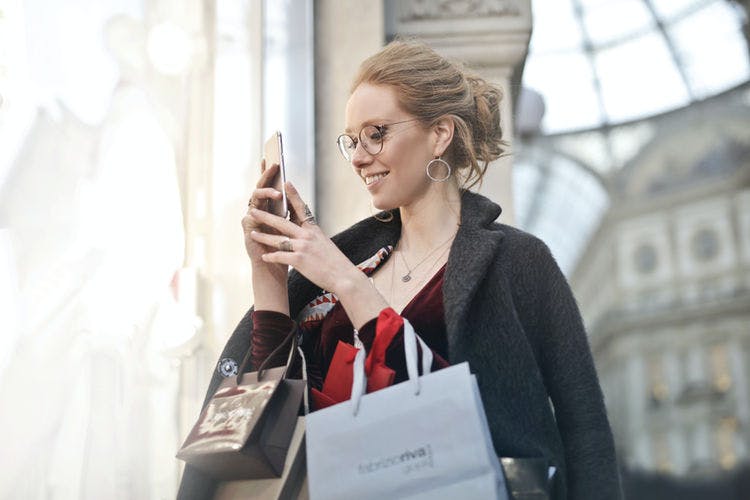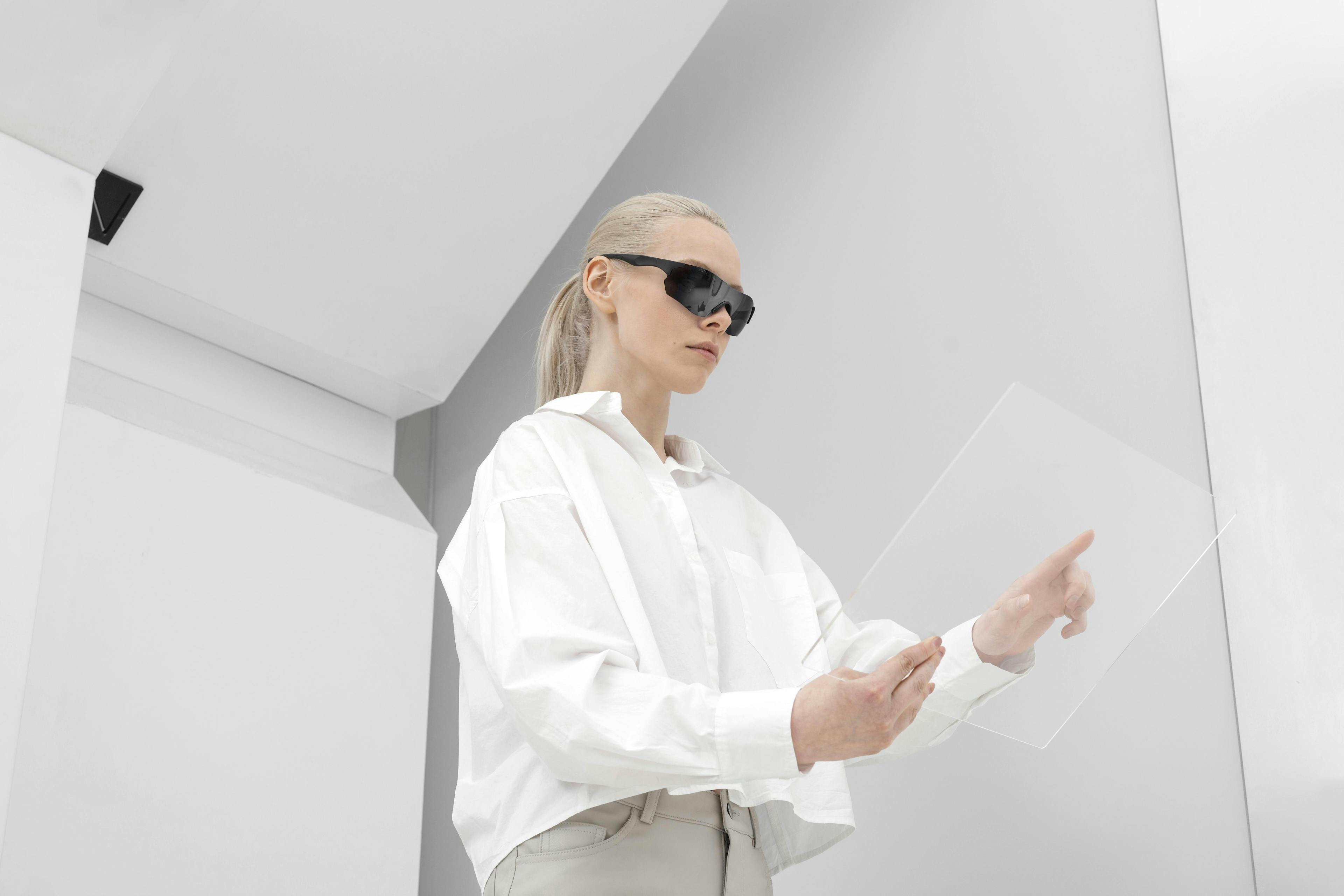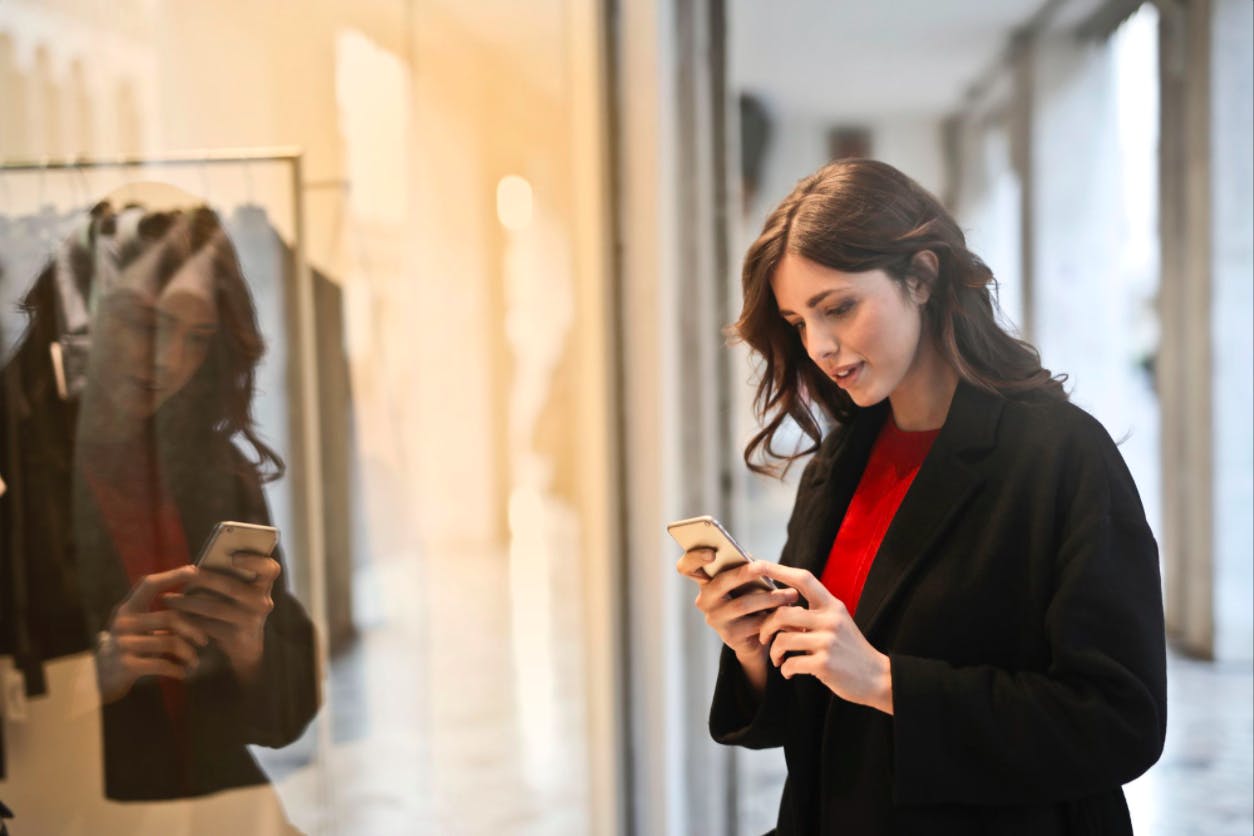In 2020, 51% of all online purchases were clothing or accessories, and this figure is expected to rise, not to mention the advent of remote work and metaverse.
However, the online experience for consumers has not changed in 15 years. It is based on the same principle where the consumer navigates the site through a home page, category pages and bland product pages.
Brands don't propose anything innovative and rely on existing propositions, consumers are tired of this lack of personalization and ask to be surprised.
The majority of traffic goes through mobile
For years, fashion brands have focused their efforts on product quality, material sourcing and retail experiences, while neglecting the e-commerce experience.
Today, e-commerce represents 15% of brands' sales, and is expected to rise to 30% by 2030.
In parallel, e-commerce traffic is dominated by mobile. This mobile traffic has multiplied by 7 in 5 years to represent 55% of global Internet traffic in 2021.
It is therefore crucial for fashion brands to offer mobile-friendly experiences to convert a maximum of customers.
So what are the levers allowing brands to surprise and engage e-commerce consumers on mobile?
Mobile browsing is outdated
The observation is simple and quickly identifiable: navigation on e-commerce sites is the same as on mobile sites.
On 95% of sites, the consumer arrives on a home page with the latest campaign initiated by the brand, then several choices are offered to him.
- Either the consumer is guided to the heart of the new collection because the brand has succeeded in attracting him with a flagship piece.
- Or he opens the different category pages to find his happiness.
In the second option, customers have the impression of being in control of their research, yet they are quickly limited by the construction of the site.
The different products are arranged in a specific order, jeans in the pants category, shirts in the top category. It is impossible for customers to see a specific piece associated with another to compose an original outfit.
This method of navigation is obsolete and can be found in the same way on mobile:
It is no longer conceivable that e-commerce on mobile is a responsive version of desktop e-commerce sites: the most popular applications such as Instagram, Tiktok, Tinder and many others have adopted the swipe as a new way to navigate.
Social networks have become the core of mobile usage, users have very little time and the swipe method is a very effective way for customers to spend time on an application.
It is therefore necessary for e-commerce to reinvent itself, to find new ways to seduce and engage customers.
The challenge of augmented reality for fashion
Augmented reality offers a multitude of new possibilities for e-merchant on mobile:
- Eyewear manufacturers have already seized on this craze by offering different filters, allowing users to see themselves with the glasses of their choice.
- The use has then extended to the makeup market, with filters allowing users to see the result virtually in advance.
- Finally, the most recent innovations concern the decoration market, it is possible to see one's sofa directly in the living room through one's mobile.
However, all the uses of these technologies are made possible by their simplicity of use.
The challenge for fashion is more consequent, by putting your phone in selfie mode, you could see the clothes on you and thus find yourself in the heart of the experience. No more problems of return, size or cut of the garment, you would be able to know the garment from every angle before ordering it.
However, this method would be too restrictive, it is too early to integrate this kind of technology in mobile e-merchant:
- Most consumers would be reluctant to film themselves shopping.
- Unlike glasses or makeup, it requires the full body and not just the face, making the experience even more constraining.
- The technology is not yet perfected and consumers do not necessarily want to see themselves projected with the clothes on them, a simpler and original navigation would satisfy them as much.

Virtual Try-On, the ideal solution?
A good solution could be a virtual try-on experience for fashion e-commerce sites, a way to give the power back to the customer without imposing anything.
In a Virtual Styling Room, each consumer can choose the mannequin he or she identifies with and choose any piece from a collection and any outfit directly worn by this mannequin.
This is a new way of navigating fashion e-commerce sites that is more inclusive and representative of the diversity of society.
The consumer is in total control of the experience and can project themselves directly with a mannequin that looks like them, allowing them to dress them and see the clothes as they will look on them.
A static content imposed by the brand becomes dynamic and in the hands of consumers. Here is an example of Virtual Styling Room on the website of a young French designer, Marine Henrion:
https://marinehenrion.com/en/mix-and-match/
Swipe: a new weapon for mobile navigation
On most of the popular mobile apps, like Tinder, Instagram or TikTok, swipe navigation has placed itself as the core of navigation.
So e-commerce sites need to find ways to follow these new trends on mobile. For example, users could select the mannequin of their choice and then swipe right or left to dress that mannequin.
With the clothes updating automatically, customers could see an infinite number of outfits with the collection made available by the brand.
This new way of browsing is destined to revolutionize the traditional methods, a site would no longer be simply responsive, a simple mobile version, but a new method of navigation adapted to a new device.
Fashion e-commerce sites must adopt the Swipe as a new standard
Every sector sees new experiences appearing with the progression of smartphones, makeup has had the selfie mode and decoration has had augmented reality.
It is therefore natural that fashion also sees new experiences appearing on mobile, however these experiences must be different from simple responsive sites adapted to the phone screen.
With swiping having proven its effectiveness and consumers demanding to be integrated into the experiences, it's only a matter of time before Virtual Try-On takes a prominent place in the ecosystem.
RESOURCES
Discover our new article

"Complete the Look" Banners : is it enough ?
Scroll through any product page on a fashion eCommerce site and chances are you’ll see it: a “Wear it With” or “How to Style It” section, usually nestled just beneath the product. These are variations of what many fashion brands refer to as “Complete the Look” banners—a quick way to suggest complementary items that finish an outfit.

Has Online Shopping Lost Its Spark?
For years, e-commerce has delivered on convenience, speed, and scale. But something essential may have been lost along the way: the joy of shopping.

5 Ways Virtual Fitting Can Elevate Your Fashion Brand’s Online Presence
Virtual fitting has become a must-have in fashion e-commerce. Just like everything in fashion, ignoring the trend means falling behind. Virtual Fitting is more than a nice-to-have, it boosts your online shopping experience while making it more accessible and engaging for everyone.

